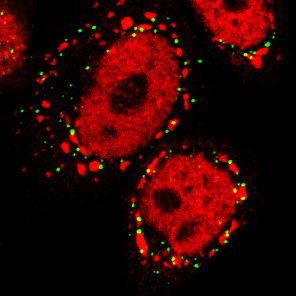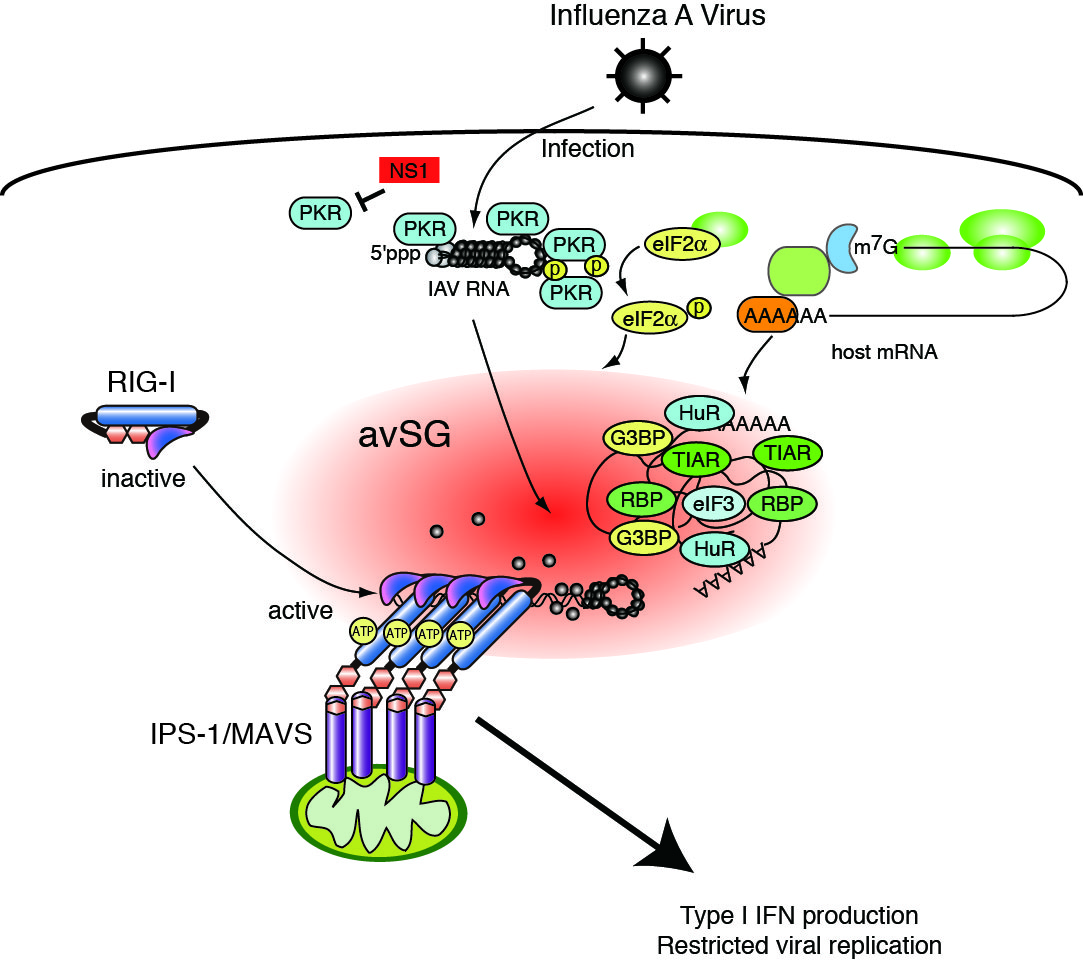

Recognition of pathogen-associated molecular patterns (PAMPs) by pattern recognition receptors (PRRs) triggers innate immune responses, which lead to swift eradication of the infected pathogens. Furthermore, PRR-mediated signaling is critical for activation and regulation of the subsequent adaptive immunity. Thus, we focus on molecular machinery and physiological significance of PRR-mediated signaling in anti-viral and anti-fungal immune responses.
Viral infection is detected by RIG-I-like receptors (RLRs), which recognize viral non-self RNA as PAMPs, and activate expression of anti-viral cytokines, such as type I interferons (IFNs). Among three RLR family members, RIG-I and MDA5 detect 5’-triphsphate containing short double-stranded RNA (dsRNA) and long dsRNA, respectively. We try to understand molecular mechanism(s) underlying recognition of these substrates by RLRs using molecular biological, cell biological and biochemical approaches. We are also interested in how fungal infection is detected by PRRs, such as C-type lectin-like receptors (CLRs).

| YONEYAMA, Mitsutoshi | Professor |
|---|---|
| ONOMOTO, Koji | Assistant Professor |
| AOKI,Yuna | Technical Official |
| MUNAKATA, Haruko | Research Promotion Technician |